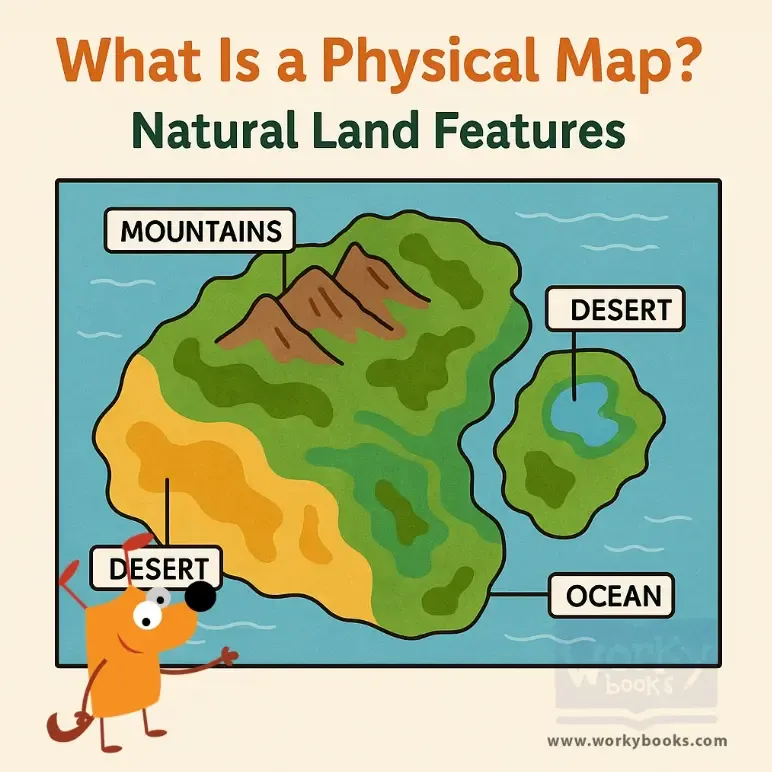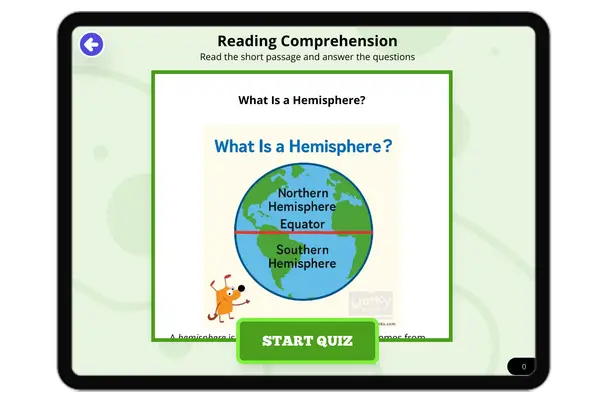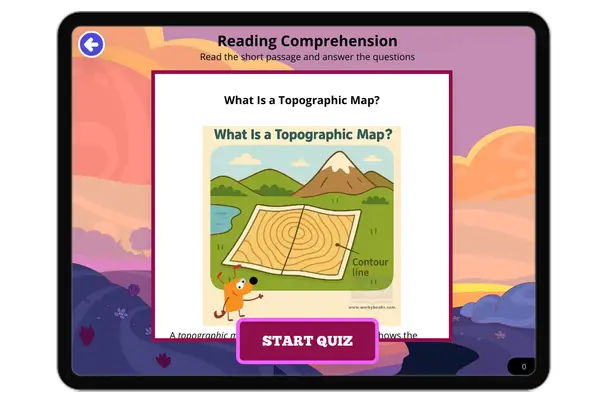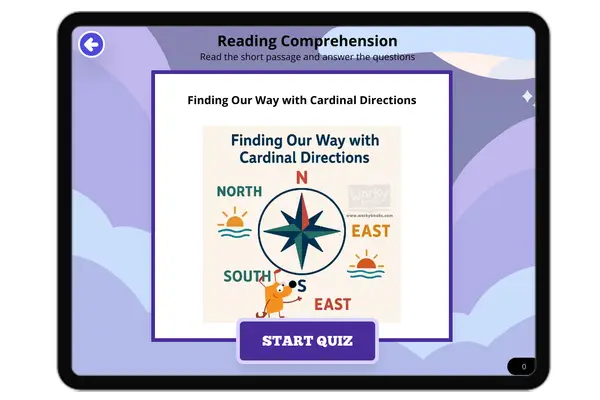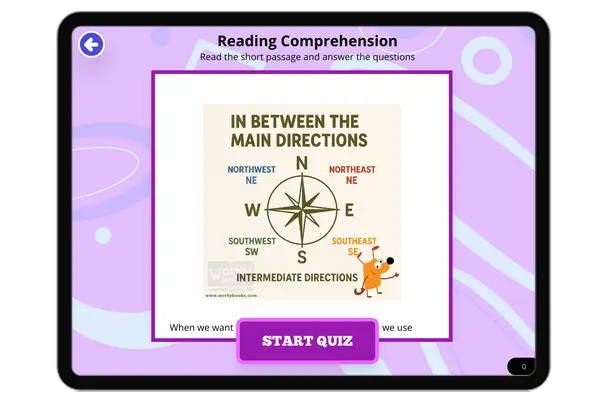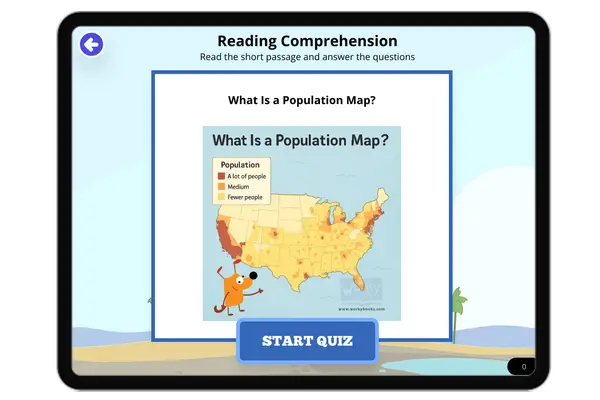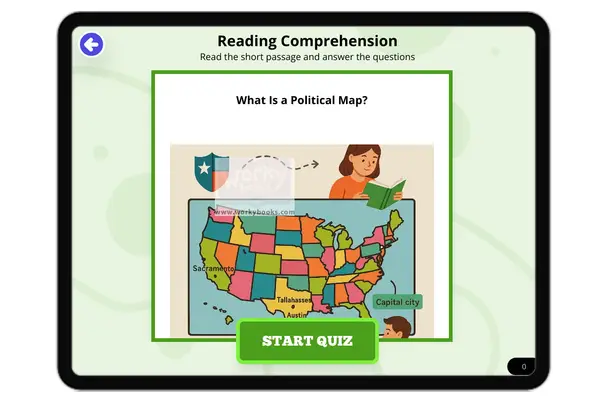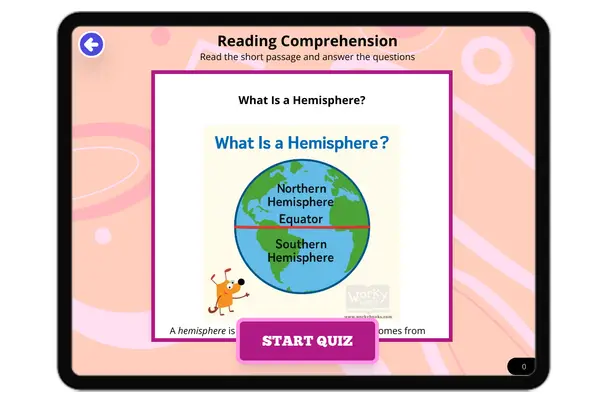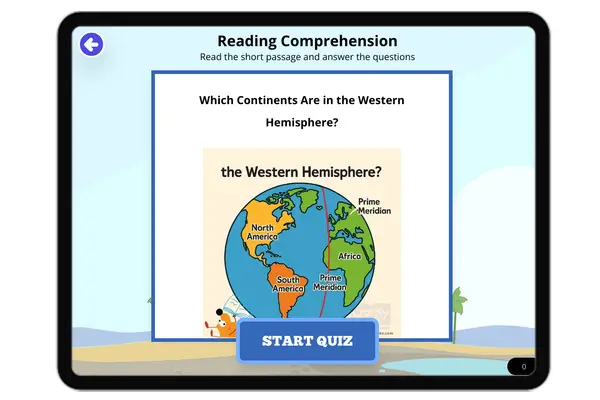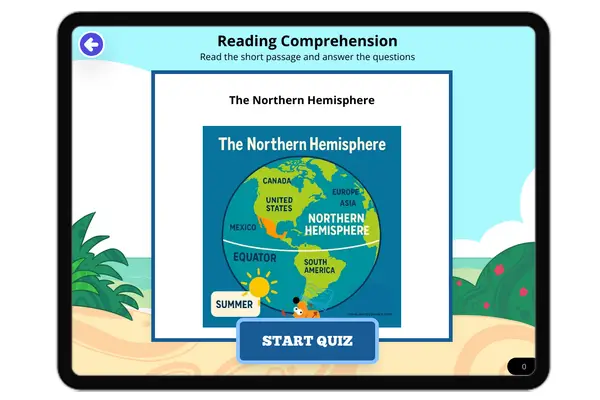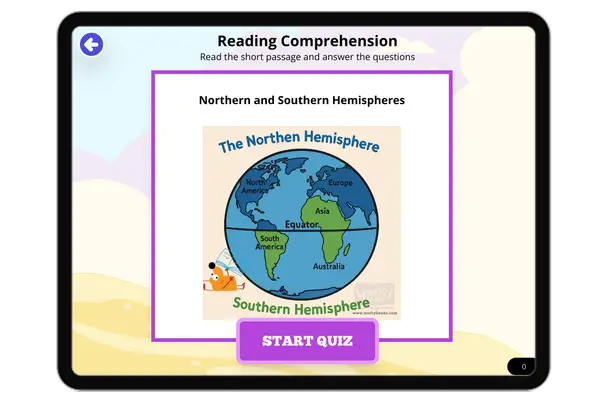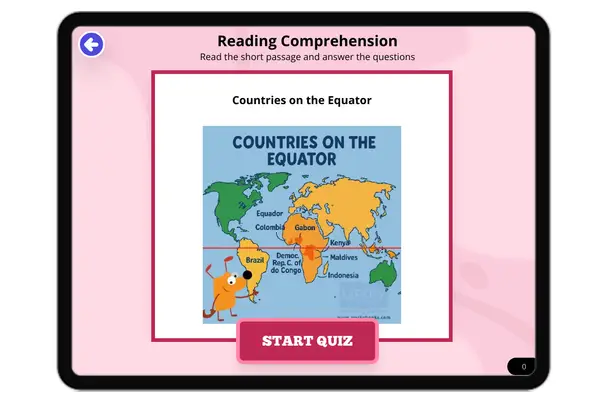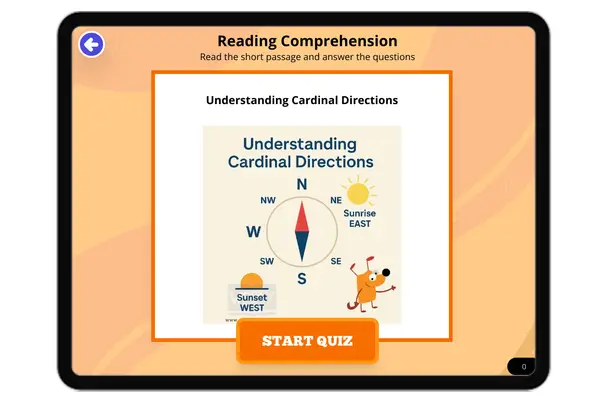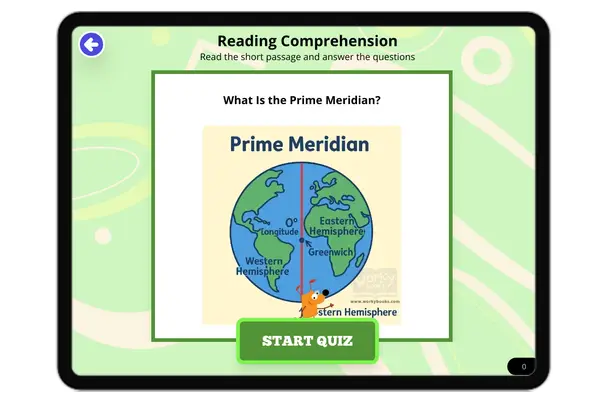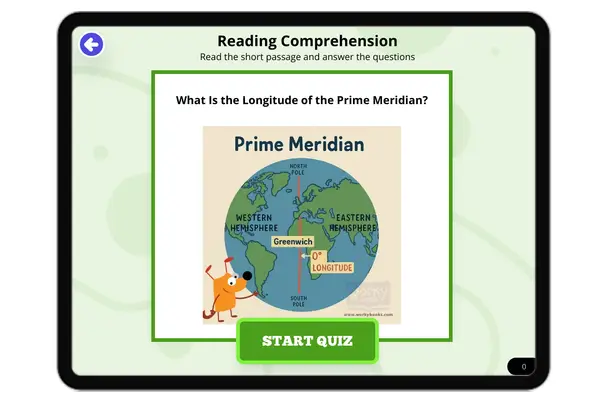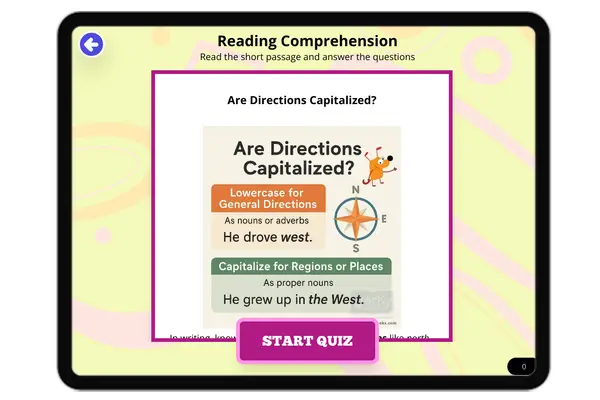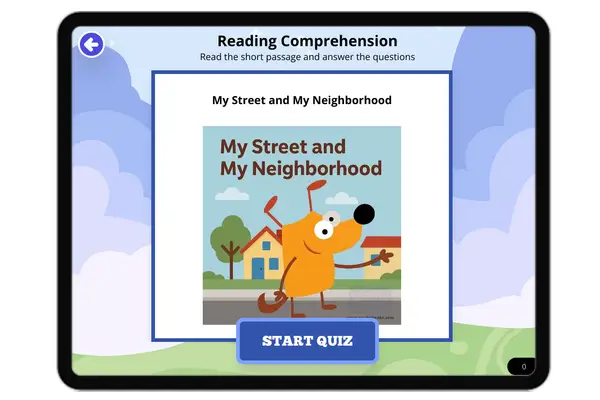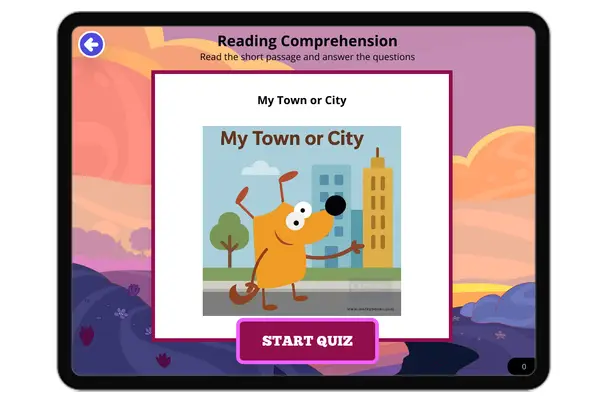What Is a Physical Map? — Reading Comprehension
Grades
- 3
- 4
- 5
- 6
- 7
Standards
- FL.SS.2.G.1.1
- SS.2.G.1.2
PRINT+DIGITAL RESOURCE
This learning resource is available in interactive and printable formats. The interactive worksheet can be played online and assigned to students. The Printable PDF version can be downloaded and printed for completion by hand.
About This Reader
This passage introduces young students to physical maps and explains how they show Earth's natural features such as mountains, rivers, lakes, and deserts. Students learn how different colors on the map represent various land types and elevations. The passage aligns with Florida standard SS.2.G.1.1 by helping students understand how to use maps to locate physical features. With real-life examples, simple vocabulary, and engaging content, this passage builds geography skills, supports map-reading practice, and promotes reading comprehension for grades 2–3.
Perfect For:
👩🏫 Teachers
- • Reading comprehension practice
- • Auto-graded assessments
- • Literacy skill development
👨👩👧👦 Parents
- • Reading practice at home
- • Comprehension improvement
- • Educational reading time
🏠 Homeschoolers
- • Reading curriculum support
- • Independent reading practice
- • Progress monitoring
Reading Features:
📖
Reading Passage
Engaging fiction or nonfiction text
❓
Comprehension Quiz
Auto-graded questions
📊
Instant Feedback
Immediate results and scoring
📄
Printable Version
Download for offline reading
🔊
Read Aloud
Voice-over with word highlighting


